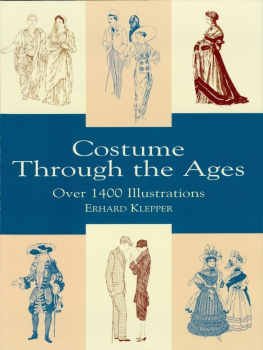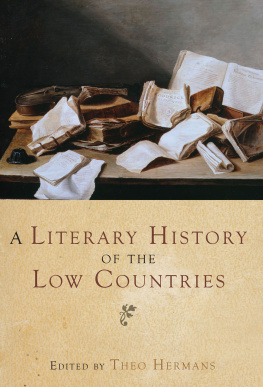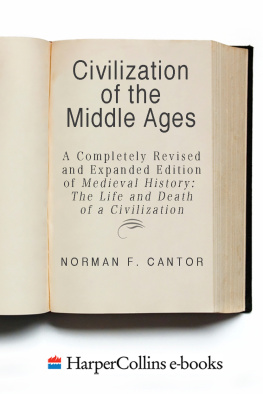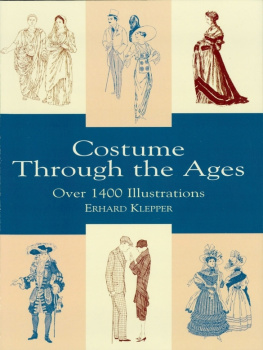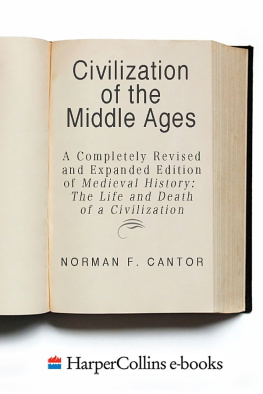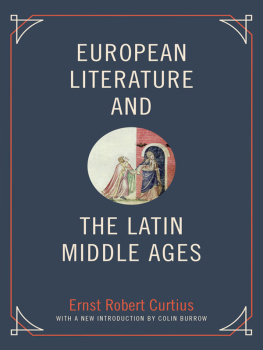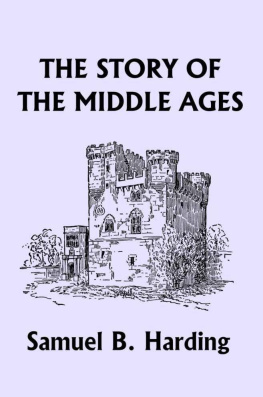Monica Chojnacka - Ages of Woman, Ages of Man: Sources in European Social History, 1400-1750
Here you can read online Monica Chojnacka - Ages of Woman, Ages of Man: Sources in European Social History, 1400-1750 full text of the book (entire story) in english for free. Download pdf and epub, get meaning, cover and reviews about this ebook. year: 2002, publisher: Routledge, genre: History. Description of the work, (preface) as well as reviews are available. Best literature library LitArk.com created for fans of good reading and offers a wide selection of genres:
Romance novel
Science fiction
Adventure
Detective
Science
History
Home and family
Prose
Art
Politics
Computer
Non-fiction
Religion
Business
Children
Humor
Choose a favorite category and find really read worthwhile books. Enjoy immersion in the world of imagination, feel the emotions of the characters or learn something new for yourself, make an fascinating discovery.

- Book:Ages of Woman, Ages of Man: Sources in European Social History, 1400-1750
- Author:
- Publisher:Routledge
- Genre:
- Year:2002
- Rating:5 / 5
- Favourites:Add to favourites
- Your mark:
- 100
- 1
- 2
- 3
- 4
- 5
Ages of Woman, Ages of Man: Sources in European Social History, 1400-1750: summary, description and annotation
We offer to read an annotation, description, summary or preface (depends on what the author of the book "Ages of Woman, Ages of Man: Sources in European Social History, 1400-1750" wrote himself). If you haven't found the necessary information about the book — write in the comments, we will try to find it.
Monica Chojnacka: author's other books
Who wrote Ages of Woman, Ages of Man: Sources in European Social History, 1400-1750? Find out the surname, the name of the author of the book and a list of all author's works by series.
Ages of Woman, Ages of Man: Sources in European Social History, 1400-1750 — read online for free the complete book (whole text) full work
Below is the text of the book, divided by pages. System saving the place of the last page read, allows you to conveniently read the book "Ages of Woman, Ages of Man: Sources in European Social History, 1400-1750" online for free, without having to search again every time where you left off. Put a bookmark, and you can go to the page where you finished reading at any time.
Font size:
Interval:
Bookmark:
AGES OF WOMAN, AGES OF MAN
Sources in European Social History, 14001750

German calendar for the year 1589 showing the ages of woman and ages of man. Reproduced with permission.
AGES OF WOMAN, AGES OF MAN
Sources in European Social History, 14001750
Edited by Monica Chojnacka and Merry E. Wiesner-Hanks
Contributor/Translators: Darlene Abreu-Ferreira, Pernille Arenfeldt, Grethe Jacobsen, Eve Levin, Carol Loats, Leslie Peirce, Allyson Poska, Katharine Swett
With additional translations by: Agnes S. Arnrsdttir, Louis Grijp, Hermina Joldersma, Hilary Marland, Jeffrey Merrick, Helmut Puff, Elizabeth Rhodes, David Vassberg

First published 2002 by Pearson Education Limited
Published 2013 by Routledge
2 Park Square, Milton Park, Abingdon, Oxon OX14 4RN
711 Third Avenue, New York, NY 10017, USA
Routledge is an imprint of the Taylor & Francis Group, an informa business
Copyright 2002, Taylor & Francis.
The right of Monica Chojnacka and Merry E. Wiesner-Hanks to be identified as Authors of this Work has been asserted by them in accordance with the Copyright, Designs and Patents Act 1988.
All rights reserved. No part of this book may be reprinted or reproduced or utilised in any form or by any electronic, mechanical, or other means, now known or hereafter invented, including photocopying and recording, or in any information storage or retrieval system, without permission in writing from the publishers.
Notices
Knowledge and best practice in this field are constantly changing. As new research and experience broaden our understanding, changes in research methods, professional practices, or medical treatment may become necessary.
Practitioners and researchers must always rely on their own experience and knowledge in evaluating and using any information, methods, compounds, or experiments described herein. In using such information or methods they should be mindful of their own safety and the safety of others, including parties for whom they have a professional responsibility.
To the fullest extent of the law, neither the Publisher nor the authors, contributors, or editors, assume any liability for any injury and/or damage to persons or property as a matter of products liability, negligence or otherwise, or from any use or operation of any methods, products, instructions, or ideas contained in the material herein.
ISBN 13: 978-0-582-41873-8 (pbk)
British Library Cataloguing in Publication Data
A CIP catalogue record for this book can be obtained from the British Library
Set in 10/13pt Garamond
Typeset by Graphicraft Limited, Hong Kong
CONTENTS
(Sources listed by chapter and number)
Austria
Azores Islands
Belgium
Dalmatia
Czech Republic (Bohemia)
Denmark
Eastern Europe
England
France
,
Germany (Holy Roman Empire)
Iceland
Italy
Netherlands
Ottoman Empire
Portugal
Russia
Serbia
Spain
Switzerland
Wales
When we think about the past, many of us imagine it as rather monolithic, short on variety and slow to change. Compared to the changes of the twentieth and early twenty-first centuries, earlier centuries seem to merge into a single image of grueling labor, archaic institutions, and poor hygiene. When we look at artistic renderings from the past, we see people with solemn faces and heavy, uncomfortable clothes. Often when we read about their lives, they seem overwhelmingly laden with hardship and oppression, or else (for a select few) extreme luxury and decadence.
Such perceptions are not entirely groundless, of course. Compared to the present, life was often very hard in pre-modern times. Travel and communication, so important to our own age, were unwieldy and undependable. Luxuries included regular baths or more than one outfit to wear; for most people these were scarce, and life expectancy was much lower than it is in the modern west. But that is not the whole picture. In many ways, women and men moved to rhythms strikingly similar to our own. Then as now, people worked hard to support their families, and rejoiced at the birth of a healthy child. They chafed at social injustice and challenged institutions they perceived as unjust. Young people worried about their future prospects, and often looked forward to having their own homes. Virtually everyone looked forward to parties, where drinking and dancing were favorite pastimes.
We can explore the differences and similarities between peoples lives in the past and our own by reading non-fiction studies or historical novels, but it is often more interesting to go directly to the historical sources themselves, that is to written and visual records produced in the period. One of the problems with this is that these records, particularly those that concern the lives of ordinary people rather than intellectual or political elites, are housed in archives around the world and written in languages we may not understand. Of course, for any period before the invention of the typewriter, records are all hand-written, which means we need to learn how to decipher them a skill called paleography before we know what they contain.
This collection seeks to overcome some of these problems, and presents a wide variety of sources concerning the lives of ordinary people in Europe for quite a long period of pre-modern history, roughly 14001750. Most of the sources are drawn directly from archives, and are printed here for the first time. The vast majority were originally written in a language other than English, and have been translated by our many contributors, who have also written the introductions to the sources. They range geographically from Europes farthest outposts in the west Iceland and the Azores in the Atlantic to its eastern reaches in Russia and the Ottoman Empire.
This collection has been organized around two main principles: stages of life and gender. In the western tradition, since the time of the ancient Greeks, people talked and wrote about the ages of man, dividing peoples life-course into specific stages. Some writers argued for four stages, corresponding to the four seasons; some twelve, corresponding to the months; and some any number in between. The number that was increasingly accepted was seven: infancy, childhood, adolescence, young adulthood, mature adulthood, older adulthood, and old age. These stages were often depicted artistically as a stepped pyramid, with the individual standing on each step and growing in size and responsibilities to mature adulthood, and then shrinking again with old age. Other artists and writers counted off the ages by decades, in which case they often settled on eight or ten stages in order to have a round number. The illustration that appears as the frontispiece to this book is an example of these, a calendar, designed to hang on peoples walls, by the German printer Michael Manger, showing the ages of man on the left and the ages of woman on the right. Death, depicted as a skeleton, accompanies the final figures on both sides.
This collection is similarly divided into eight chapters. The first three follow the classic stages: childhood, youth, and young adulthood, with the third focussing particularly on the process of finding a spouse. The next four chapters investigate aspects of adult life marriage, work, religion, and social networks and the final chapter explores widowhood and old age. Each chapter contains between twenty and thirty sources from at least ten different countries, and ends with a series of questions for discussion.
Next pageFont size:
Interval:
Bookmark:
Similar books «Ages of Woman, Ages of Man: Sources in European Social History, 1400-1750»
Look at similar books to Ages of Woman, Ages of Man: Sources in European Social History, 1400-1750. We have selected literature similar in name and meaning in the hope of providing readers with more options to find new, interesting, not yet read works.
Discussion, reviews of the book Ages of Woman, Ages of Man: Sources in European Social History, 1400-1750 and just readers' own opinions. Leave your comments, write what you think about the work, its meaning or the main characters. Specify what exactly you liked and what you didn't like, and why you think so.

